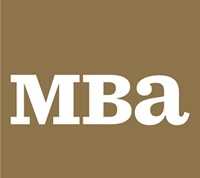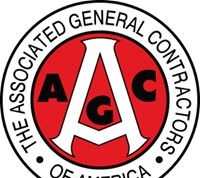Bay Area Home Sales Dip Below 2012 Level Again; Median Sale Price Rises
La Jolla, CA – April 18, 2013 – (RealEstateRama) — Bay Area home sales fell below a year earlier for the second consecutive month in March as demand continued to outstrip supply in many markets. While low-end sales fell sharply compared with March 2012, $500,000-plus transactions jumped, helping to push the median sale price up on a year-over-year basis for the 12th consecutive month, a real estate information service reported.
A total of 7,263 new and resale houses and condos sold in the nine-county Bay Area last month. That was up 34.4 percent from 5,404 the month before, and down 6.0 percent from 7,723 in March 2012, according to San Diego-based DataQuick.
It’s normal for sales to jump between February and March, with that gain averaging 39.5 percent since 1988, when DataQuick’s statistics begin. March sales have ranged from a low of 4,898 in 2008 to a high of 12,645 in 2004. Last month’s sales were 17.1 percent lower than the March average of 8,758.
The median price paid for a home in the nine-county Bay Area last month was $436,000. That was up 7.7 percent from $405,000 in February and up 21.8 percent from $358,000 in March last year.
The median has risen on a year-over-year basis for 12 consecutive months, with double-digit year-over-year gains the last ten months, and increases above 20 percent for the past five months.
Still, last month’s median was 34.4 percent lower than the $665,000 peak in June and July of 2007. In March 2009 the median hit its post-peak low of $290,000. That trough was an almost absurdly low level for the Bay Area, reflecting both widespread price declines as well as robust sales of heavily discounted inland foreclosures at a time high-end sales were all but dormant.
It appears that well over half of the 21.8 percent year-over-year increase in March’s median sale price reflects rising home prices. It’s Economics 101: Prices go up as growing demand meets an exceptionally low supply of homes for sale. However, a portion of the March median’s year-over-year gain reflects a change in market mix – sales of low-cost distress homes have fallen sharply, while sales of pricier move-up homes have shot up.
“Higher sales in the middle and top of the housing market reflect improved consumer confidence, ultra-low mortgage rates and the unleashing of more pent-up demand than many anticipated. There’s been a shift in psychology, where more people worry prices will rise and fewer fear a decline. It’s drawn a lot of folks off the fence following a long stretch of sub-par sales, especially in the higher price ranges. In the more affordable markets, we’ve seen a big drop in foreclosures, which limits the supply of homes for sale. Then you have homeowners who still can’t sell because they owe more than their homes are worth,” said John Walsh, DataQuick president.
“The more prices rise, though, the more likely we’ll see a lot more people put their homes on the market,” Walsh added. “There’s pent-up demand among potential sellers, too, and many will try to move as soon as it makes sense. A substantial jump in inventory would at least moderate home price growth.”
Last month the number of homes that sold for less than $500,000 fell 18.9 percent compared with March 2012, while the number that sold for $500,000 or more rose 25.2 percent, DataQuick reported.
Distressed property sales – the combination of foreclosure resales and “short sales” – made up about 30 percent of the resale market in March. Last month’s figure, which was the lowest in five years, was down from about 35 percent in February and down from about 49.0 percent a year ago.
Foreclosure resales – homes that had been foreclosed on in the prior 12 months – accounted for 10.7 percent of Bay Area resales last month, down from 14.0 percent in February, and down from 25.5 percent a year ago. Last month’s level was the lowest since foreclosure resales were 10.1 percent of the resale market in November 2007. Foreclosure resales peaked at 52.0 percent in February 2009. The monthly average over the past 18 years is 10.2 percent.
Short sales – transactions where the sale price fell short of what was owed on the property – made up an estimated 19.0 percent of Bay Area resales last month. That was down from an estimated 20.5 percent in February and down from 23.8 percent a year earlier.
Jumbo loans, mortgages above the old conforming limit of $417,000, accounted for 39.7 percent of last month’s purchase lending, up from 37.1 percent in February, and up from 30.7 percent a year ago. Jumbo usage dropped as low as 17.1 percent in January 2009. Before the credit crunch struck in August 2007, jumbos accounted for nearly 60 percent of the Bay Area purchase loan market.
Adjustable-rate mortgages (ARMs), another indicator of mortgage availability, accounted for 12.7 percent of the Bay Area’s home purchase loans last month. That was up from 11.0 percent in February, and up from 11.6 percent a year ago. Since 2000, ARMs have accounted for a monthly average of about 42 percent of all purchase loans. ARMs hit a low of 3.0 percent of purchase loans in January 2009.
Government-insured FHA home purchase loans, a popular, low-down-payment choice among first-time buyers, accounted for 12.3 percent of home purchase mortgages in March. That was down from 14.6 percent in February and down from 20.9 percent a year earlier. In recent months the FHA level has been the lowest since summer 2008, reflecting both tougher qualifying standards and the difficulties first-time buyers have competing with investors and other cash buyers.
The most active lenders to Bay Area home buyers last month were Wells Fargo with 14.8 percent of the purchase loan market, Stearns Lending with 4.5 percent, and RPM Mortgage with 3.6 percent.
Last month absentee buyers – mostly investors – purchased 27.3 percent of all Bay Area homes. That was down from 28.7 percent in February, and up from 24.2 percent a year ago. Absentee buyers paid a median $324,000 in March, up 29.6 percent from $250,000 a year earlier.
Buyers who appear to have paid all cash – meaning no sign of a corresponding purchase loan was found in the public record – accounted for 31.1 percent of sales in March. That was down from 32.3 percent the month before and up from 29.4 percent a year earlier. The monthly average going back to 1988 is 12.9 percent. Cash buyers paid a median $325,000 in March, up 30.0 percent from $250,000 a year earlier.
San Diego-based DataQuick monitors real estate activity nationwide and provides information to consumers, educational institutions, public agencies, lending institutions, title companies and industry analysts. Because of late data availability, sales were estimated for Alameda and San Francisco counties.
The typical monthly mortgage payment that Bay Area buyers committed themselves to paying last month was $1,579. That was up from $1,460 in February, and up from $1,359 a year ago. Adjusted for inflation, last month’s payment was 44.1 percent below the typical payment in spring 1989, the peak of the prior real estate cycle. It was 58.7 percent below the current cycle’s peak in July 2007.
Indicators of market distress continue to decline. Foreclosure activity is well below year-ago and peak levels reached in the last few years. Financing with multiple mortgages is low, and down payment sizes are stable, DataQuick reported.
All Homes #Sold #Sold Pct. $Median Median Pct.
| SalesVolume | MedianPrice | |||||
| All homes | Mar-12 | Mar-13 | % Chng | Mar-12 | Mar-13 | % Chng |
| Alameda | 1,501 | 1,483 | -1.2% | $328,000 | $416,500 | 27.0% |
| Contra Costa | 1,519 | 1,485 | -2.2% | $256,500 | $346,000 | 34.9% |
| Marin | 269 | 309 | 14.9% | $565,000 | $740,000 | 31.0% |
| Napa | 127 | 117 | -7.9% | $328,000 | $395,500 | 20.6% |
| Santa Clara | 1,781 | 1,618 | -9.2% | $475,000 | $604,000 | 27.2% |
| San Francisco | 543 | 497 | -8.5% | $650,000 | $818,000 | 25.8% |
| San Mateo | 720 | 594 | -17.5% | $541,500 | $676,000 | 24.8% |
| Solano | 688 | 580 | -15.7% | $189,000 | $230,000 | 21.7% |
| Sonoma | 575 | 560 | -2.6% | $295,000 | $370,000 | 25.4% |
| Bay Area | 7,723 | 7,263 | -6.0% | $358,000 | $436,000 | 21.8% |
Source: DataQuick, www.DQNews.com
Media calls: Andrew LePage (916) 456-7157













